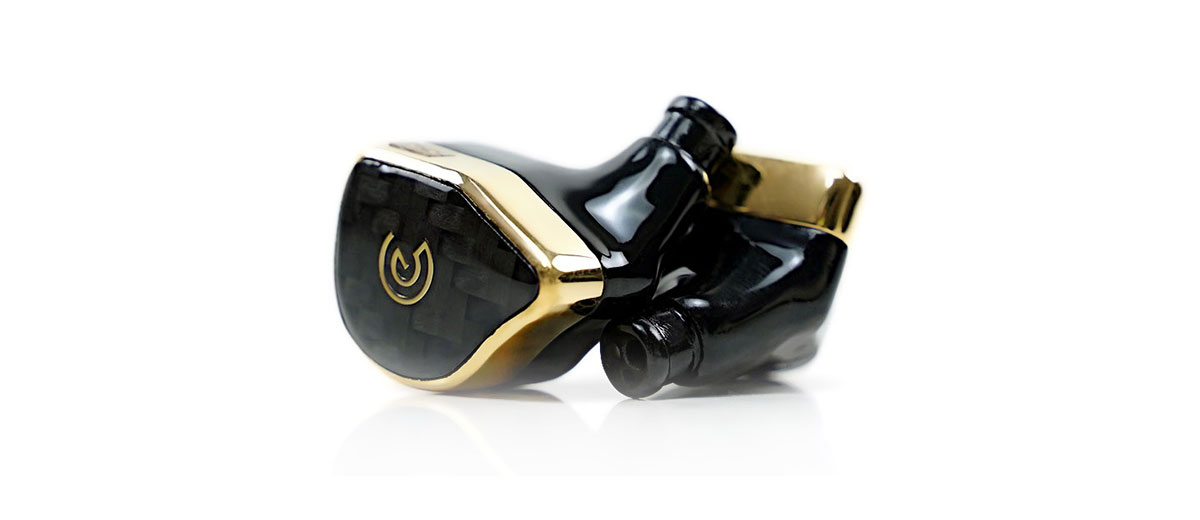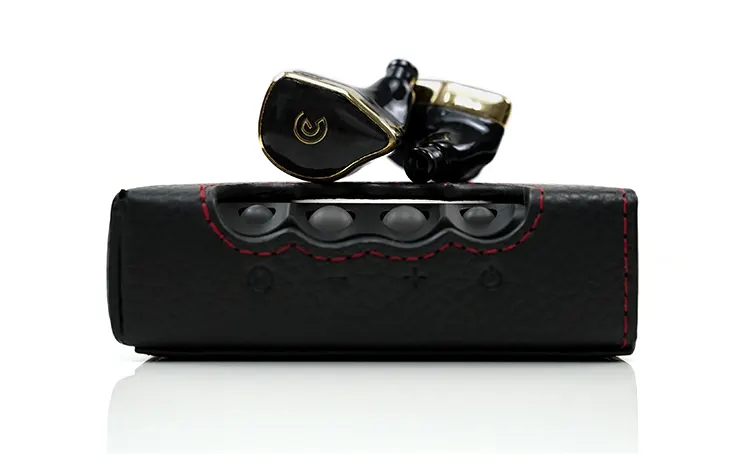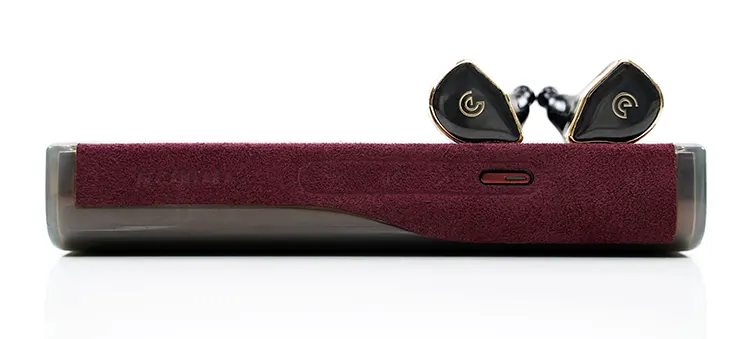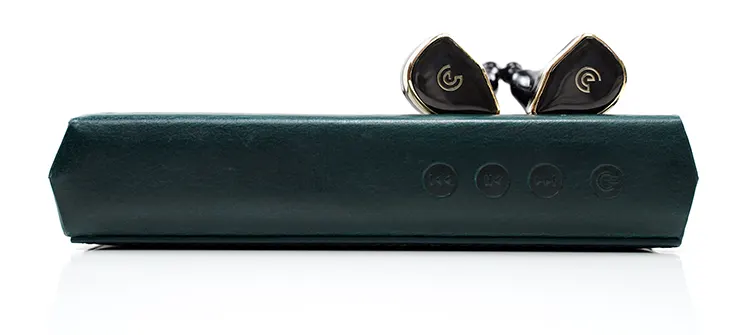Sound Impressions
The following sound impressions were completed using a mix of the HiBy R8 II, the ONIX Mystic XP1, and the Chord Electronics Mojo 2. The Omnium was fitted with the stock single-flange silicone tips and cable.
Summary
The Omnium has its own distinct identity and one that belongs among its high-end peers. This is an expansive-sounding monitor, one with a tonal mix of slight warmth on one side, slight brightness on the other, and a set of mids that is neutral to natural-sounding overall.
The tuning is also fairly transparent, meaning different sources and amplifiers will have their core tuning properly reflected in the performance of the Omnium.
Feed it a warm tube amplifier such as the Cayin HA-2A and you will get plenty of warmth. Conversely, a cleaner DAP tuning, such as the HiBy R8 II or the iBasso DX320 MAX Ti will bias the Omnium to a neutral and somewhat brighter tonal quality.
The optimal performance lies somewhere in between with the likes of the tube timbre Cayin N8ii and the denser smoother sounding ONIX Mystic XP1 tailor-made to bring the best out of the Omnium.
And what is the best? Well, you are talking excellent dynamic range, a tight bass line with excellent sub-bass extension, neutral lower-mids, a very clean set of highs, and a midrange that can deftly and quickly separate stentorian-like vocal performances from more delicate background spatial detail.
In short, the Omnium is a resolution monster, not overly emotional or soothing but rather it sucks you into a very immersive soundscape wowing you with its forte of intricate layering and speed.
Frequency Response
Running the Omnium against the Harman Target the bass response is slightly north of neutral sub-80Hz but drops through the mid and upper bass 80-200Hz.
The listener will experience a heightened perception of bass-to-midrange separation with less mid-bass bloom to the Omnium’s punch. You do get an excellent and very dynamic sub-bass response when called upon from the Omnium.
From 200hz to 1k, the Omnium plays hide and seek with neutral. Sometimes slightly above up to 500Hz and then slightly below before you hit 1k.
Nothing you would argue is hugely divergent from what I would describe as a linear curve from the upper bass to the mids. You will not hear any lingering warmth from an overly exaggerated bass shelf but neither is it dipped or lacking in presence.
One prominent aspect of the Omnium FR is the 1-2k range. Typically, this is given a mild boost for vocal clarity but here it sounds noticeably stronger relative to the 2-5k region which is more neutral in elevation.
Vocals are very much to the fore but as mentioned in the summary, they may shine but do not drown out the rest of the mids. Rather the bump creates a stronger perception of separation and better staging depth.
Post 6k there is some energy there and it can sound north of neutral or brighter up to 10k and possibly beyond. Not overtly so, it’s not too sharp though this can be source and tip dependent.
What I do find is some aspects of the mids timbre that pull strongly from upper-order harmonics can exhibit enhanced emphasis such as vocal sibilance or upper-register synth claps. You can switch to a warmer source with the double-flange tips to dampen that effect.
Timbre
The Omnium can present a range of interesting tonal colorations depending on the tip and source choices. It is transparent in that manner though at its core I would argue that you get a dynamic but relatively neutral and clean tone with a healthy level of contrast and shine the further up the range you go.
For example, with the ONIX Mystic XP1, the double-flange wide bore tips, and a mix of EDM or R’n’B the sound is dense, somewhat warm sounding on the lows, with clear vocal harmonies and pleasant sheen on higher pitching percussion passages from a well-extended treble tuning.
Switch to the single-flange narrow bore tips and the bass extends deeper, sounding tighter or pacier with a stronger level of mids and treble tonal contrast. The coloration is more dynamic, and more exciting but also slightly fussier meaning sources like the DX320 MAX Ti can come across as a bit too bright with these tips.
One thing to note about the bass shelf is the sub-bass bias. When called on the fundamental is excellent and I mean attention-grabbing, fast, and very deep sounding. When not called upon, the tonal complexion can become quite lean and comparatively shallow-sounding. That’s when people will start defining the Omnium as bright-sounding.
However, this will be largely recording and source-dependent with the ONIX amplifier sounding far meatier compared to the R8 II regardless of bass levels in the recording, for example.
Still, it does back up my initial statement at the very start of this review that Craft Ears has a knack for delivering a unique and ear-grabbing bass response from their monitors.
Staging & Dynamics
Big sounding and holographic, though the award this year for staging hugeness goes to the PMG Audio Apx, a monitor that costs several times as much as the Omnium.
From among its similarly-price peers, it’s a strong competitor. You get excellent depth, above-average width with a forward vocal line, and stellar headroom with a strong emphasis on detail and dynamic range and speed throughout.
The dynamic driver in the Omnium also scales beautifully without exhibiting noticeable distortion problems. That excellent bass-to-mids separation is the key to how well the Omnium can scale up the sub-bass presence without drowning out the mids.
Feed it some additional power and it can sound incredibly deep and powerful but without any distracting upper-bass bloom. Other IEMs, such as the Annihilator 2023 will offer what I could loosely describe as ‘more bass’ but it comes with bloom and will not sound as tight as the Omnium lows.
Synergy
Efficiency & Sensitivity
The Craft Ears Omnium is rated at 12Ω and comes with the company’s True Load technology which provides for a flat impedance response with outputs with a high impedance factor.
Typically, modern DAPs and dongles are sub-1Ω for their output so it’s less of a deal-maker than it used to be. However, you still get the odd outlier such as the recently reviewed ONIX Mystic XP1 integrated DAC and amp which can skew the response of IEMs such as the Vision Ears VE10.
The XP1’s balanced output impedance rating is an eye-watering 6.6Ω so skew is very much a possibility. However, the Omnium performed ‘true’ and as tuned when paired with the XP1 using an iFi Audio iEMatch as a controlled A/B connection alternative with the same setup.
Craft Ears has no SPL rating for the Omnium which has been a consistent approach to sensitivity ratings from the company going back to the Craft 6 and Craft 4.
Judging from a comparison with a few competing models, I would rate the Omnium as relatively sensitive but not ultra-sensitive and will drive well from a moderately powered DAP or dongle without amplifying any noticeable background hiss.
For example, on one end of the scale, the 118.6 dB @100mV@1KHz rated VE10 is more sensitive when compared to the Omnium using a low gain balanced output from the HiBy R8 II.
On the other end of the scale, the 94 dB @100mV @1khz rated Annihilator 2023 is far less sensitive on the same connection for volume control and response to gain. You can place the Omnium safely in between that rather wide range SPL range.
DAP Pairings
I tested 4 DAPs with the Omnium and a desktop tube amplifier with a 4.4mm lower power output option, the Cayin HA-2A.
The high-level synopsis out of those sessions is a preference for a smoother source and amplifier but nothing too warm and vice versa, nothing too bright in the highs.
For example, the iBasso DX320 MAX Ti/Omnium pairing offered the most open and resolving technical performance with excellent layering and dynamic range. However, the coloration leaned too bright in the highs.
That emphasis caught fire in the upper harmonics of higher-pitching vocal timbre, producing stronger sibilance which I found less appealing.
The antidote to that was the Cayin N8ii and to a lesser extent the HiBy R8 II. The N8ii allows the Omnium treble to shine but using the tube timbre mode, it softens the attack to produce a sweeter more agreeable tone to natural vocal sibilance.
The HiBy R8 II has slightly less treble exuberance and a drier decay but still sounds a bit smoother for the same vocal performances compared to the DX320 MAX Ti. It also produces a tighter, punchier bass response from the Omnium when compared to the Cayin.
The absolute best was the ONIX Mystic XP1. The dynamic driver inside the Omnium can scale and sound huge with this pairing. It also has a warmer denser sound when compared to the DAPs, producing an impressive note weight and texture from the Omnium mids and highs.
The HA-2A pairing was not to my taste. It was too warm and bloated in the mid-to-upper bass and lacked air through the mids compared to the portable sources.
Dongle Pairings
I tested 4 dongles with the Omnium with the listening sessions resulting in them being split into two groups; excellent bass extension and weight and smoother mids and highs.
The HiBy FC6 and the Luxury & Precision W2 sit in the first group. Both offer either the fullest weightiest sub-bass presence in the case of the FC6 or the punchiest mid-bass in the case of the W2. They both delivered the goods if you want the Omnium lows to sound powerful and punchy.
However, neither impressed me as much with their treatment of the Omnium mids and highs. In the case of the FC6, the mids sounded full-bodied but a bit unrefined and raw sounding. The W2 delivered too much upper treble presence creating the brightest midrange timbre and sharpest vocal sibilance of the four dongles.
The second group consisted of the Cayin RU7 and RU6, both of which delivered a much more agreeable set of mids and highs.
The RU7 was probably the smoothest for sibilance though not overly rounded and natural in its presentation. There is still decent contrast in the midrange timbre rather sibilance didn’t sound overly emphasized.
The RU6 produced a stronger midrange emphasis, bringing out some excellent vocal presence, though sibilance is a touch more noticeable but still relatively pleasing and sweet to the ear.
Neither of these dongles is as bombastic on the lows as the first two. The RU7 is more neutral in its weight with the RU6 youth of neutral though compensates with some upper-bass bloom.
I would also pick the RU7 over the other dongles to pair with the Omnium for its more expansive imaging and superior separation.






